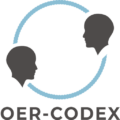What is the difference between free and open?
For the digital resource to be considered OER, the resource needs to be both – open and free. However, being free does not always mean that the resource is open. As stated by Wiley (2016) “If all was meant by open was free, we wouldn’t need a new word. We’d just call it free”. Free resources indicate that a particular resource can be accessed at no other cost, however, it does not mean, that this resource can be shared, reused, remixed, or modified. However, when the resource is open, the user must be able to re-use and share it, if they follow the licensing term assigned by the author of that resource. Based on the license that is established, users may also revise and remix resources with self-generated content or other open resources (Wiley, 2014). Within the permissions and deadlines set out in the license for adapting and modifying the resources, teachers can create new content knowledge. These open resources can be used by the lecturer both in his/her courses and shared with others with the appropriate permissions and licenses.
| Watch the video “Attribution and Fair Use: Copyright in Open Education. #1” by Abbey Elder, 2017 [3:46] |
Copyright, Open license and Creative Commons
When talking about OERs and open access, it is important to be aware that there are different levels of openness that teachers need to be aware of:
- Public domain – Creative Commons is not applied, or the author waives copyright.
- Possibility to edit the content without giving up the author’s rights.
- Content sharing only.
- Open access only.
- “All rights reserved” (copyright).
To understand how each of the above-mentioned levels of openness relates to different licenses and why it is important to understand this and apply it in your teaching and learning material, we will now explain the key principles of different licenses.
Three concepts are often found in the literature when talking about digital educational resources: copyright, open license, and Creative Commons. These three terms explain the authors’ attribution and define how the work can be used. However, these three concepts explain different licensing aspects.
Copyright
Key features of the copyright license:
- The symbol of the copyright –
- The general rule defining copyright – “All rights reserved” (or at least, most rights reserved). This means that you need permission/license to do anything with the scope of the copyright owner’s rights (economic or moral rights) unless the law provides otherwise (e.g., where there is an exception permitting that use).
- use requires prior permission from the copyright owner unless within an exception to owner’s rights (e.g., fair dealing) under the Copyright Act.
